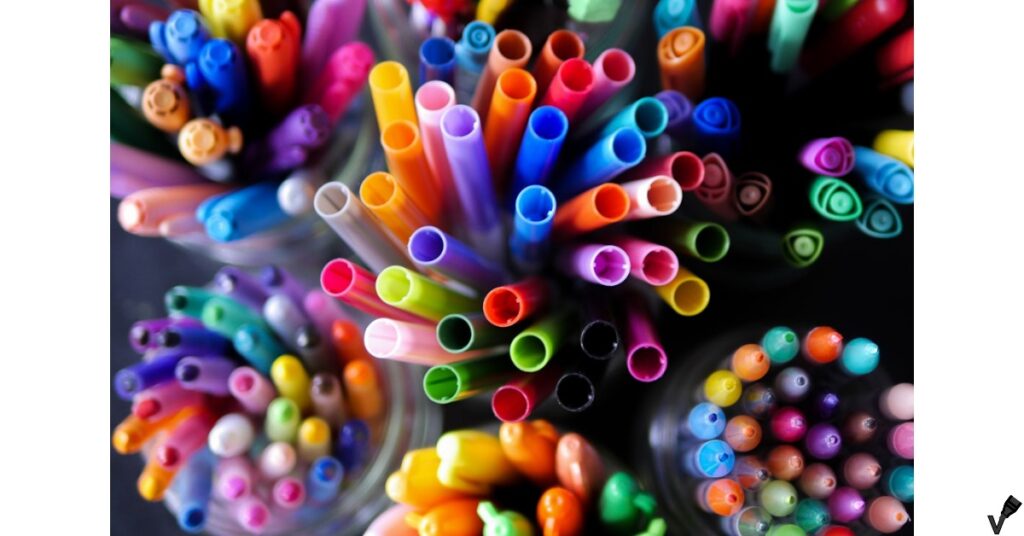When I first started exploring the world of markers, I was overwhelmed by the sheer variety. The main choice boiled down to water-based and alcohol-based markers. Each type has its own strengths and quirks, and picking the right one can make or break your artwork. In my opinion, understanding these differences is crucial.
Water-based markers are great for beginners and those on a budget. They’re non-toxic, easy to clean up, and perfect for casual projects like journaling or simple sketches. But I quickly found they have a tendency to streak and don’t blend well, which can be frustrating when trying to achieve a smooth finish.
On the flip side, alcohol-based markers, while pricier, offer vibrant colors and seamless blending. They’re ideal for detailed illustrations and professional work. The first time I used them, I was blown away by the smooth transitions and rich hues. However, they do bleed through paper, so using thick, high-quality paper is essential to prevent any mishaps.
So, why is choosing the right type important? It directly affects the quality and durability of your work. Whether you’re just starting out or aiming for a polished, professional look, knowing the strengths and limitations of each marker type can help you make an informed choice and enhance your creative process.
Water-Based vs. Alcohol-Based Markers
Key Differences
When it comes to choosing between water-based and alcohol-based markers, I’ve spent countless hours tinkering with both. It’s a topic that always sparks debate among artists. I’ve come to develop my own strong opinions based on my personal experiences.
Advantages and Disadvantages
Right from the first day I ventured into the world of markers, I was amazed by the choices and quickly realized that the decision between water-based and alcohol-based markers was more significant than I had anticipated. In my opinion, knowing the pros and cons of each type can dramatically influence your artwork’s quality and your overall satisfaction.
Starting with water-based markers, these are usually my go-to for quick sketches and casual art projects. They are affordable, non-toxic, and easy to clean up, making them perfect for beginners and kids. One of the major advantages is that they don’t bleed through paper easily, which means you can use both sides of a sheet without worry. They’re excellent for creating watercolor effects; just add a little water, and you can achieve beautiful, soft washes. However, the downside is that they can be quite streaky. I’ve often struggled with uneven color application, especially on regular paper. They also tend to warp or tear the paper if you’re not careful, which can be frustrating.

In contrast, alcohol-based markers are a game-changer for anyone looking to produce professional-quality work. The first time I used them, I was blown away by how vibrant and smooth the colors were. These markers are perfect for blending, creating seamless gradients that are nearly impossible with water-based markers. They dry quickly, reducing the risk of smudging, and are ideal for use on a variety of surfaces, including glossy and non-absorbent papers. However, they come with their own set of challenges. They bleed through thinner papers, requiring the use of thick, high-quality paper or a protective layer underneath. Plus, they have a strong odor, which can be unpleasant if you’re working for long periods in a confined space.
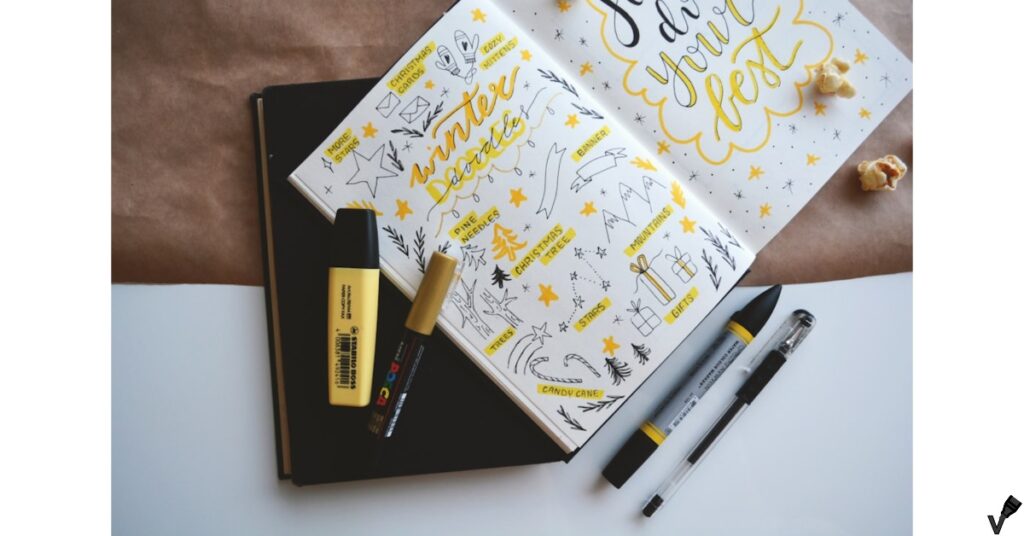
Why is this important? Knowing the strengths and weaknesses of each marker type helps you choose the right tool for your specific project. For instance, water-based markers are great for quick, casual drawings or for use in bullet journals where you don’t want the ink to bleed through. They’re also safer for kids and easier to clean up. On the other hand, alcohol-based markers are ideal for detailed illustrations, professional artwork, and projects where vibrant colors and smooth blending are crucial. Understanding these differences can save you a lot of frustration and help you achieve the best possible results in your art.
To sum up:
| Type of Marker | Advantages | Disadvantages |
|---|---|---|
| Water-Based Markers | – Affordable | – Can be streaky |
| – Non-toxic | – Uneven color application, especially on regular paper | |
| – Easy to clean up | – May warp or tear paper if not used carefully | |
| – Do not bleed through paper easily | ||
| – Excellent for creating watercolor effects with added water | ||
| Alcohol-Based Markers | – Vibrant and smooth colors | – Bleed through thinner papers, requiring thick, high-quality paper or a protective layer |
| – Perfect for blending and creating seamless gradients | – Strong odor, which can be unpleasant in confined spaces | |
| – Dry quickly, reducing the risk of smudging | ||
| – Ideal for use on a variety of surfaces, including glossy and non-absorbent papers |
Best Uses for Each Type
In my opinion, knowing when and how to use each type can make a significant difference in your creative process.
Water-based markers are my go-to for projects that require subtlety and blending with other water-soluble media. One of their standout qualities is their ability to be used like watercolors. I often use them on watercolor paper to create soft washes and delicate gradients. This technique is perfect for landscapes, backgrounds, and any project where a gentle touch is needed. I remember my first attempt at blending water-based markers with a wet brush – the way the colors flowed and mixed was magical, producing effects that were impossible to achieve with dry media alone.
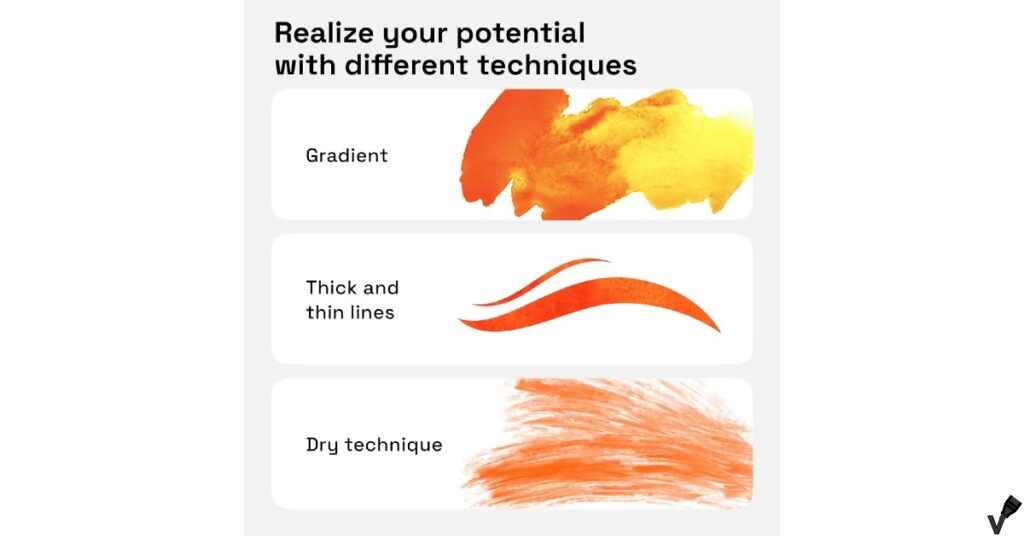
In addition to watercolor effects, water-based markers are fantastic for bullet journaling and hand lettering. They don’t bleed through most papers, which is crucial for journals where both sides of the page are used. The non-toxic nature and ease of cleanup also make them ideal for everyday use. I’ve spent countless hours creating intricate designs and calligraphy in my journal, enjoying the control these markers offer. The brush tips allow for both fine details and broad strokes, making them versatile tools for lettering enthusiasts.
On the other hand, alcohol-based markers excel in projects requiring vibrant, smooth, and professional finishes. The first time I used them for an illustration, I was amazed by their blending capabilities. Alcohol markers are perfect for detailed illustrations, character design, and any work that demands rich, seamless color transitions. They dry quickly and produce consistent, streak-free coverage, which is essential for polished, high-quality pieces.
Alcohol-based markers are also great for mixed media projects. Their ability to layer without disturbing the underlying colors allows for intricate detailing and shading. I often combine them with colored pencils or gel pens to add depth and texture to my work. This versatility is invaluable, especially when working on complex pieces that require multiple techniques. However, they do bleed through thin paper, so using the right surface is crucial. I always opt for thick, non-absorbent paper or marker-specific paper to ensure the best results.

Why is this important? Understanding the strengths and weaknesses of each type of marker allows you to choose the right tool for your project, ensuring you achieve the desired outcome. Whether you’re a beginner or a seasoned artist, knowing how to leverage the unique properties of water-based and alcohol-based markers can elevate your creative work.
In conclusion, water-based markers are ideal for projects involving watercolor techniques, journaling, and hand lettering, while alcohol-based markers are best for detailed illustrations, vibrant graphics, and mixed media. My experience with both has shown me that each has its place in an artist’s toolkit, and mastering their uses can lead to stunning results. So, experiment with both, find what works best for you, and let your creativity flourish.
Popular Brands and Their Offerings
Regarding the offerings from well-known brands, Tombow and Staedtler became my go-to for water-based markers, while Copic and Prismacolor dominated my collection of alcohol-based markers. Each brand brings something unique to the table, and understanding their offerings can significantly impact your artwork.
Tombow Markers
Tombow markers quickly became a favorite of mine. Their Dual Brush Pens are incredibly versatile, featuring a flexible brush tip on one end and a fine tip on the other. I love using them for calligraphy and blending techniques because the colors are vibrant and blend smoothly. The water-based ink is also non-toxic, which is a big plus when working for long periods or around children. I remember the first time I used Tombow markers for a watercolor effect—it was amazing how easily the colors mixed with water to create soft, beautiful gradients.
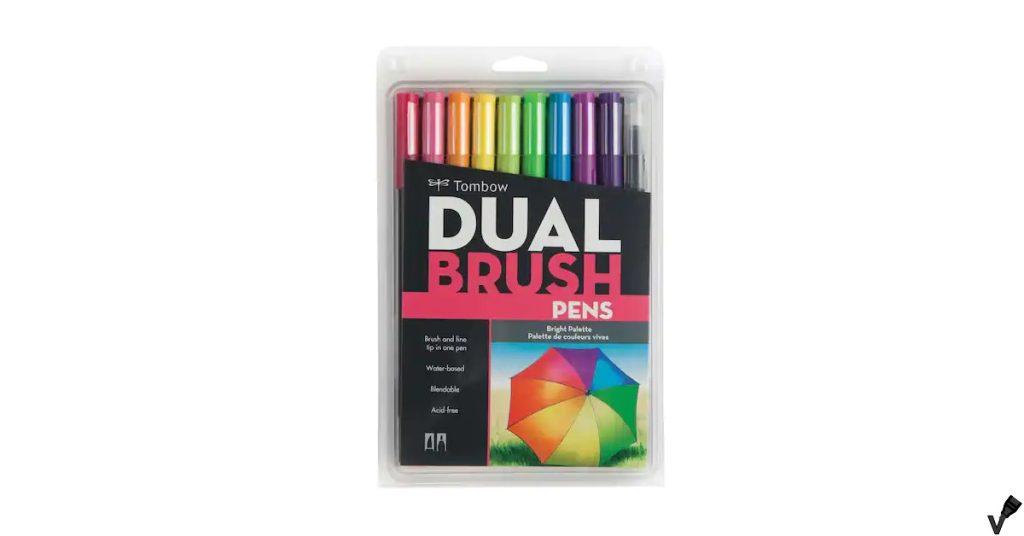
Staedtler Markers

On the other hand, Staedtler markers are known for their precision and reliability. The Staedtler Triplus Fineliners, with their fine tips and ergonomic triangular barrels, are perfect for detailed work and prolonged use. I often use them for intricate patterns and detailed illustrations. The ink is water-based but dries quickly, reducing smudging and allowing for crisp, clean lines. Staedtler’s color range is impressive, making it easy to find the exact shade needed for any project.
Copic Markers
Switching to alcohol-based markers, Copic markers stand out for their superior blending capabilities and rich, vibrant colors. The first time I used Copic markers, I was blown away by how smoothly the colors transitioned. These markers are perfect for detailed illustrations, manga, and any project that requires high-quality, professional finishes. They also have replaceable nibs and refillable ink, which adds to their longevity and value. I remember creating a detailed portrait with Copic markers and being thrilled with the depth and realism I could achieve.
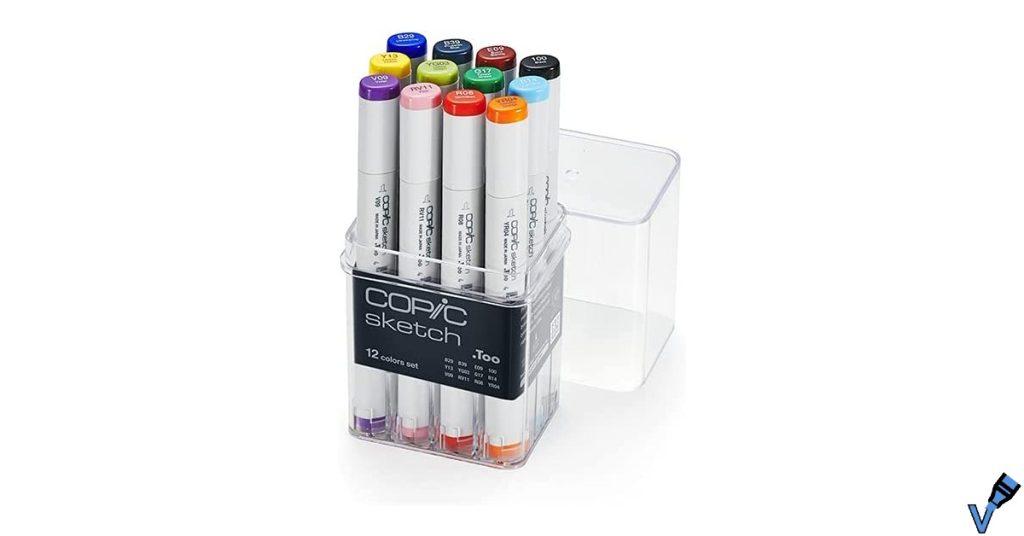
Prismacolor Markers
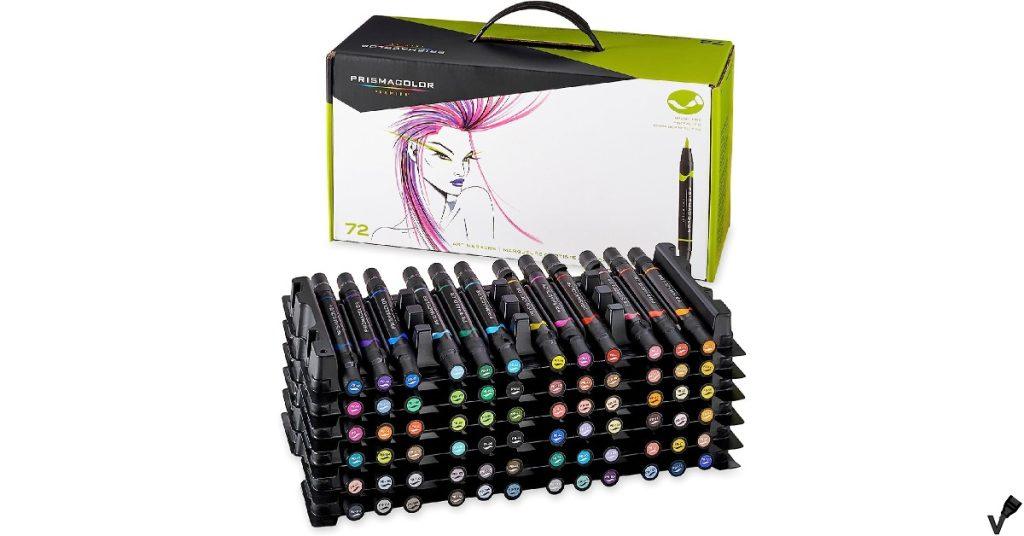
Prismacolor markers are another favorite for their bold colors and smooth application. They’re great for both beginners and experienced artists, offering a variety of nibs for different effects. I’ve used Prismacolor markers for everything from graphic design to mixed media projects. The ink is consistent and dries quickly, which helps prevent smudges and allows for layering colors effectively. Their affordability compared to other high-end markers also makes them a great choice for artists on a budget.
Why is this important? Knowing the strengths of each brand helps you choose the right tools for your specific needs. Whether you’re working on a detailed illustration, a vibrant graphic, or a mixed media project, understanding what each type of marker excels at can save you time and enhance the quality of your work.
To sum up, Tombow and Staedtler are my top picks for water-based markers due to their versatility and precision, while Copic and Prismacolor shine in the world of alcohol-based markers for their blending capabilities and vibrant colors. Each brand brings something unique to the table, and by understanding their strengths, you can choose the best tools to bring your creative vision to life.
Conclusion
I have learned to value the unique benefits of both alcohol-based and water-based markers throughout my marker experience. Due to their distinct qualities, each kind can be used for a variety of tasks. When it comes to water-based markers, I prefer Tombow and Staedtler because of their convenience and adaptability. They’re fantastic for creating watercolor effects, intricate designs, and detailed illustrations without bleeding through paper. In my opinion, their non-toxic nature and affordability make them ideal for everyday use and beginner artists.
However, alcohol-based markers, like those from Prismacolor and Copic, have better blending skills and rich, vivid colors that make images come to life. When doing professional work that calls for smooth gradients and durable quality, they are invaluable. They do cost more, though, and special paper is needed to stop the bleeding.
Why is this distinction important? Understanding the composition and performance of each marker type on different surfaces ensures that you choose the right tool for your project, enhancing your creative process and final results. From personal experience, mastering the techniques suitable for each marker type can elevate your artwork, making the creative journey more rewarding.
At the end of the day, an artist’s arsenal should include both alcohol-based and water-based markers. I am pretty sure anyone can accomplish the best results by investigating their capabilities and understanding when to employ each. The correct markers may make all the difference, whether you are creating a detailed illustration or just making sketches.
Frequently Asked Questions (FAQs)
-
What are the main differences between water-based and alcohol-based markers?
Water-based markers use water as a solvent, making them non-toxic and easier to clean up. They are generally less vibrant and more prone to streaking. Alcohol-based markers, on the other hand, use alcohol as a solvent, offering vibrant colors, quick drying times, and excellent blending capabilities, but they can have a strong odor and tend to bleed through paper easily. -
Which type of marker is better for blending colors?
Alcohol-based markers are generally better for blending colors due to their quick-drying nature and the ability to layer colors smoothly. Water-based markers can blend, but it often requires more skill and patience, as they tend to leave streaks and may cause the paper to pill if overworked. -
What surfaces are best for using water-based markers?
Water-based markers work best on thicker, absorbent papers like watercolor paper, which can handle the water content without buckling or tearing. They are also suitable for use in bullet journals and coloring books because they do not bleed through pages as easily as alcohol-based markers. -
Are alcohol-based markers safe for children to use?
Alcohol-based markers are not typically recommended for young children due to their strong odor and the potential for ink fumes to cause irritation. Water-based markers are a safer choice for kids as they are non-toxic, odorless, and easy to clean. -
Which markers are more cost-effective for beginners?
Water-based markers are typically more affordable than alcohol-based markers, making them a good choice for beginners or casual artists. They are less likely to bleed through paper and do not require special paper, further reducing the cost for those starting out.

